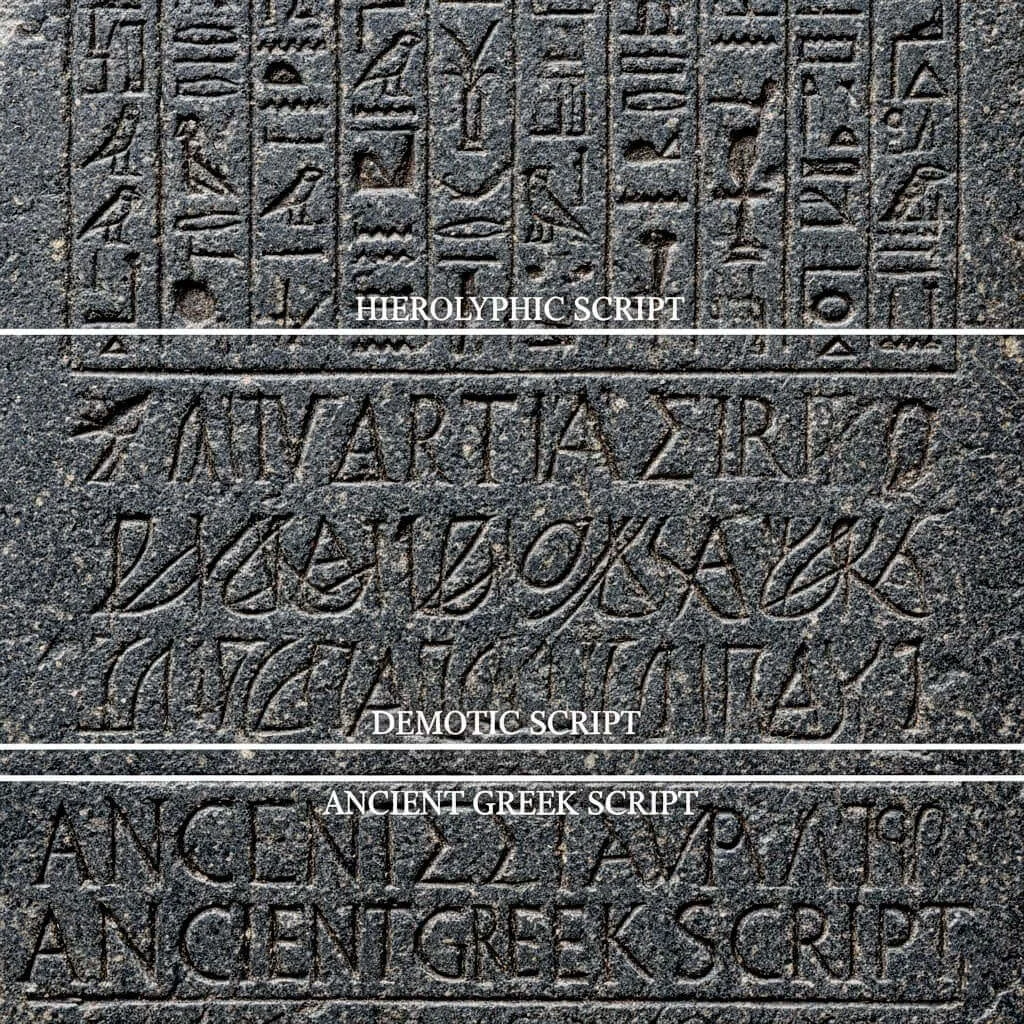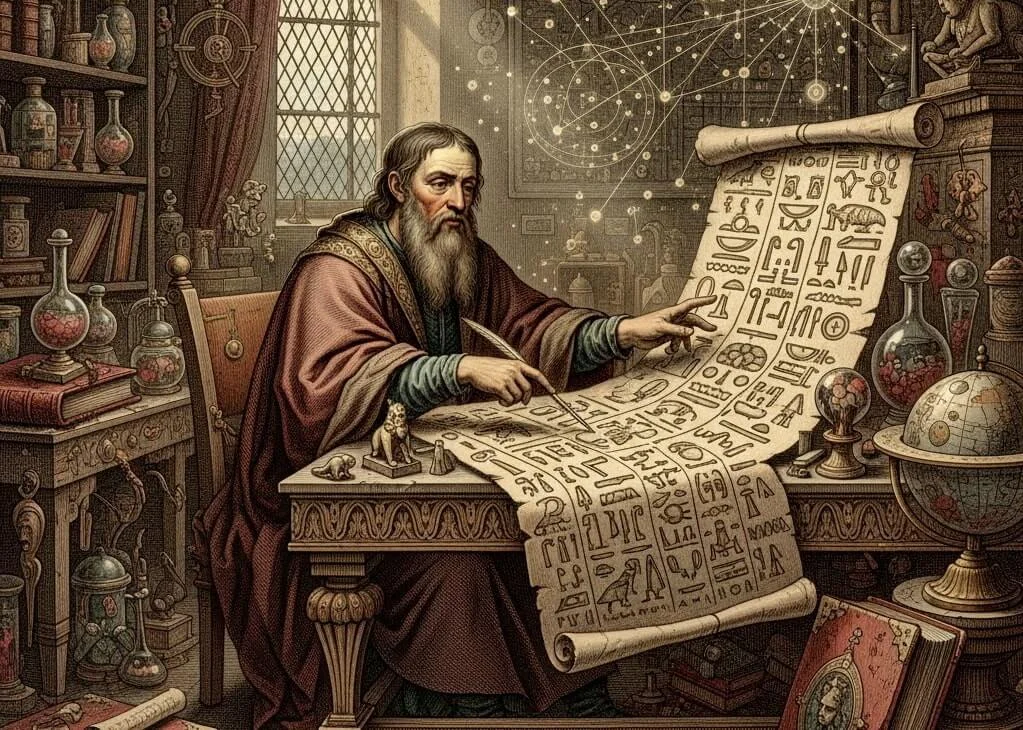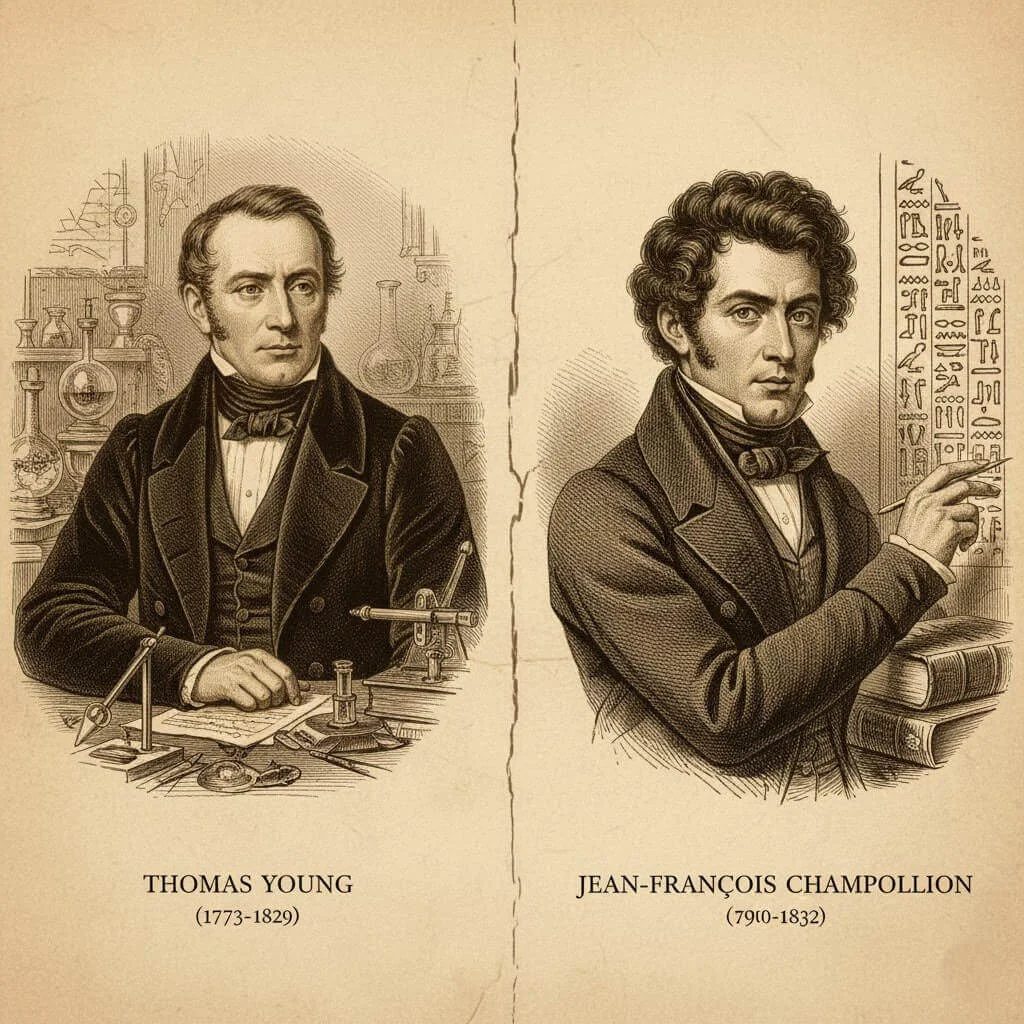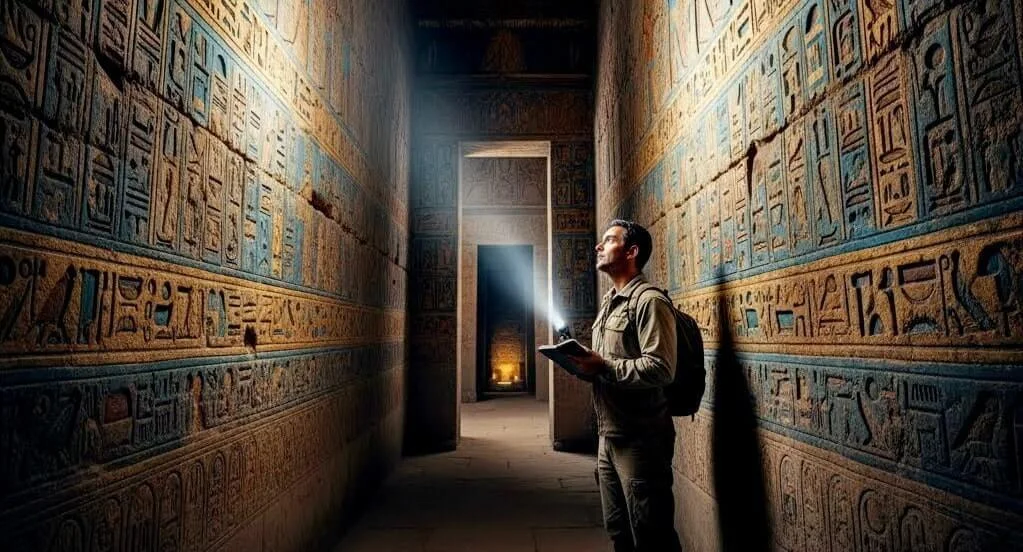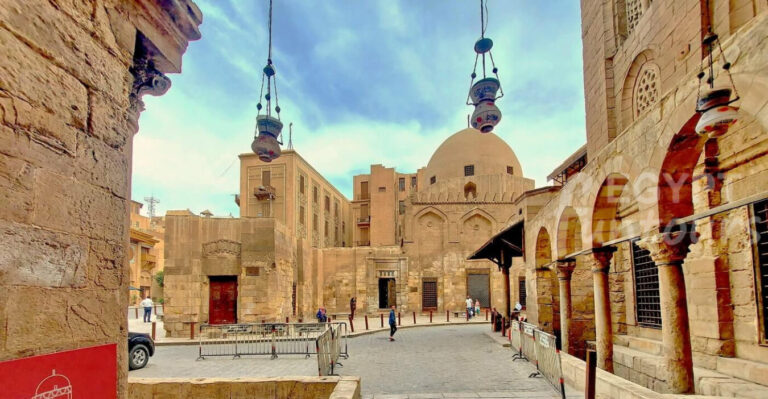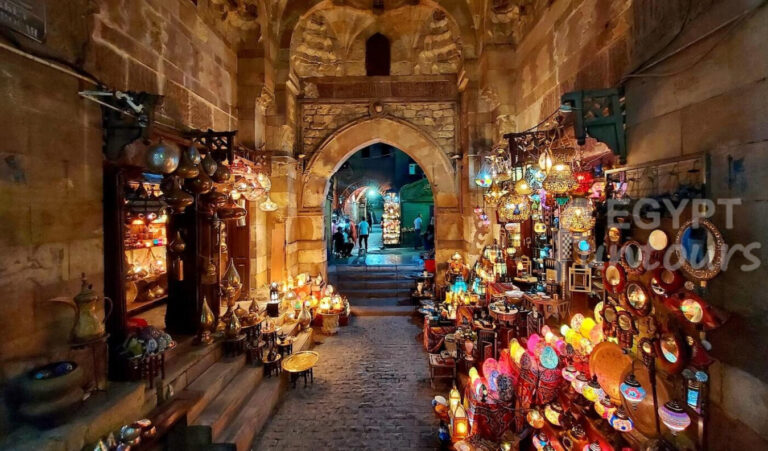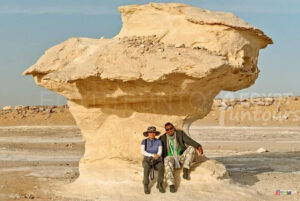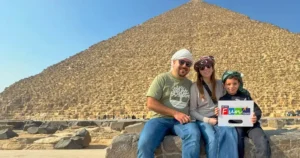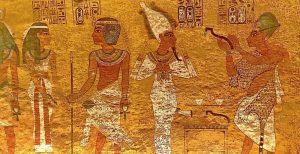Imagine one of history’s greatest civilizations falling completely silent. For 1,400 years, this was the reality for Ancient Egypt. The knowledge of how to read the hieroglyphs covering their majestic tombs and temples had vanished, locking their true history away behind a code no one could crack. This long silence was finally broken by a chance discovery in 1799, which launched the incredible intellectual quest that became the Rosetta Stone decipherment. This is the gripping story of how that single stone provided the key to solving Egypt’s greatest mystery and allowed a lost world to speak again.
The Discovery: A Prize of War in the Egyptian Desert
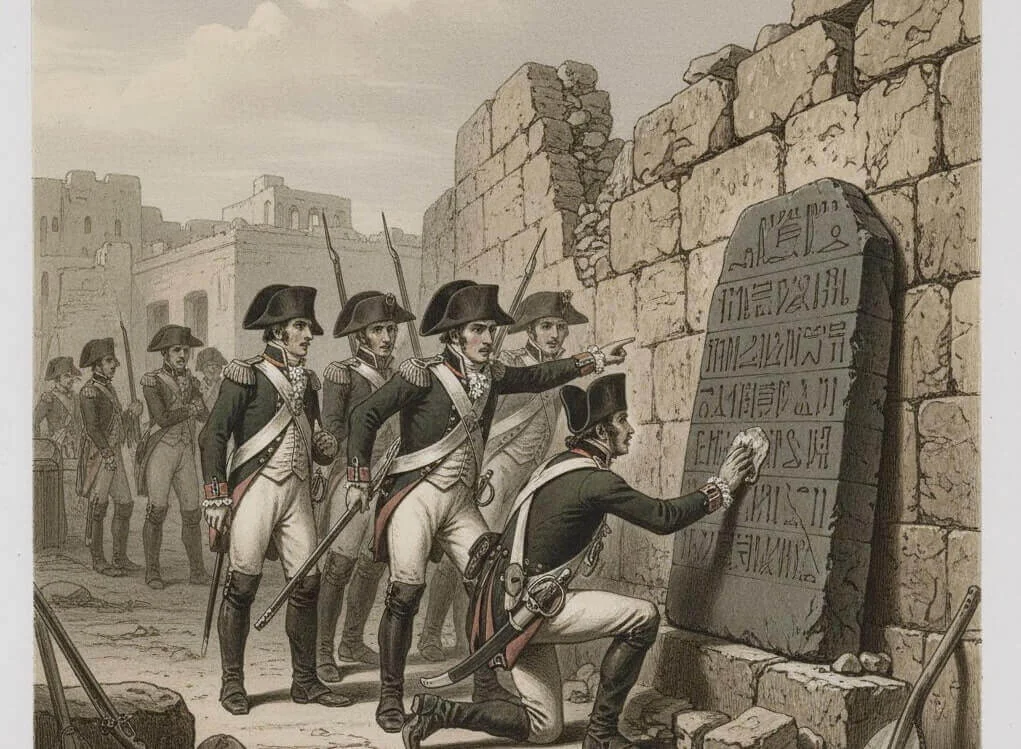
The journey of the Rosetta Stone begins not with archaeologists, but with soldiers. Interestingly, it was Napoleon Bonaparte’s failed invasion of Egypt that led to this monumental discovery.
Napoleon’s Unlikely Contribution to History
In 1798, Napoleon invaded Egypt. Along with his army, he brought a team of 167 scientists and scholars, known as the savants. Their mission was to document every aspect of Egypt. Consequently, while the military campaign was a failure, this scientific expedition kickstarted the world’s obsession with Egyptology.
In July 1799, French soldiers were reinforcing a damaged fortress near the town of Rosetta (Rashid). A soldier named Pierre-François Bouchard noticed a peculiar stone slab built into an old wall. It was covered in three distinct types of writing. Recognizing its potential importance, he immediately saved it from destruction. The French understood that if this was the same text in three scripts, they held the key to unlocking hieroglyphs.
From Fortress Wall to Global Treasure
Unfortunately for the French, their victory was short-lived. British forces defeated them in 1801, and under the terms of the Treaty of Alexandria, the French had to surrender all the ancient artifacts they had found. As a result, the Rosetta Stone became a prize of war. The British shipped it to London, and by 1802, it was on public display in the British Museum, where it remains a star attraction today.

